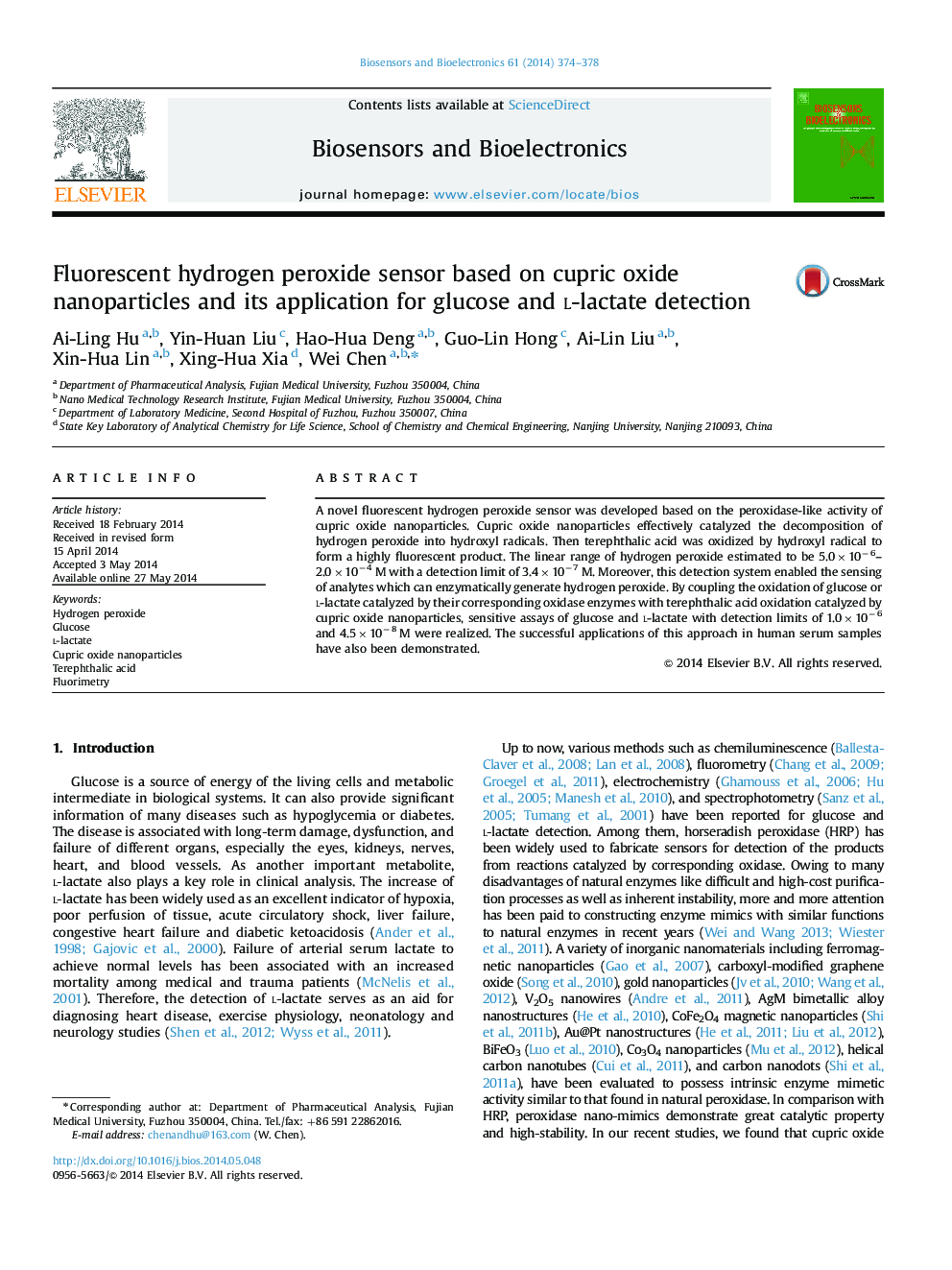| Article ID | Journal | Published Year | Pages | File Type |
|---|---|---|---|---|
| 7233210 | Biosensors and Bioelectronics | 2014 | 5 Pages |
Abstract
A novel fluorescent hydrogen peroxide sensor was developed based on the peroxidase-like activity of cupric oxide nanoparticles. Cupric oxide nanoparticles effectively catalyzed the decomposition of hydrogen peroxide into hydroxyl radicals. Then terephthalic acid was oxidized by hydroxyl radical to form a highly fluorescent product. The linear range of hydrogen peroxide estimated to be 5.0Ã10â6-2.0Ã10â4Â M with a detection limit of 3.4Ã10â7Â M. Moreover, this detection system enabled the sensing of analytes which can enzymatically generate hydrogen peroxide. By coupling the oxidation of glucose or l-lactate catalyzed by their corresponding oxidase enzymes with terephthalic acid oxidation catalyzed by cupric oxide nanoparticles, sensitive assays of glucose and l-lactate with detection limits of 1.0Ã10â6 and 4.5Ã10â8Â M were realized. The successful applications of this approach in human serum samples have also been demonstrated.
Related Topics
Physical Sciences and Engineering
Chemistry
Analytical Chemistry
Authors
Ai-Ling Hu, Yin-Huan Liu, Hao-Hua Deng, Guo-Lin Hong, Ai-Lin Liu, Xin-Hua Lin, Xing-Hua Xia, Wei Chen,
